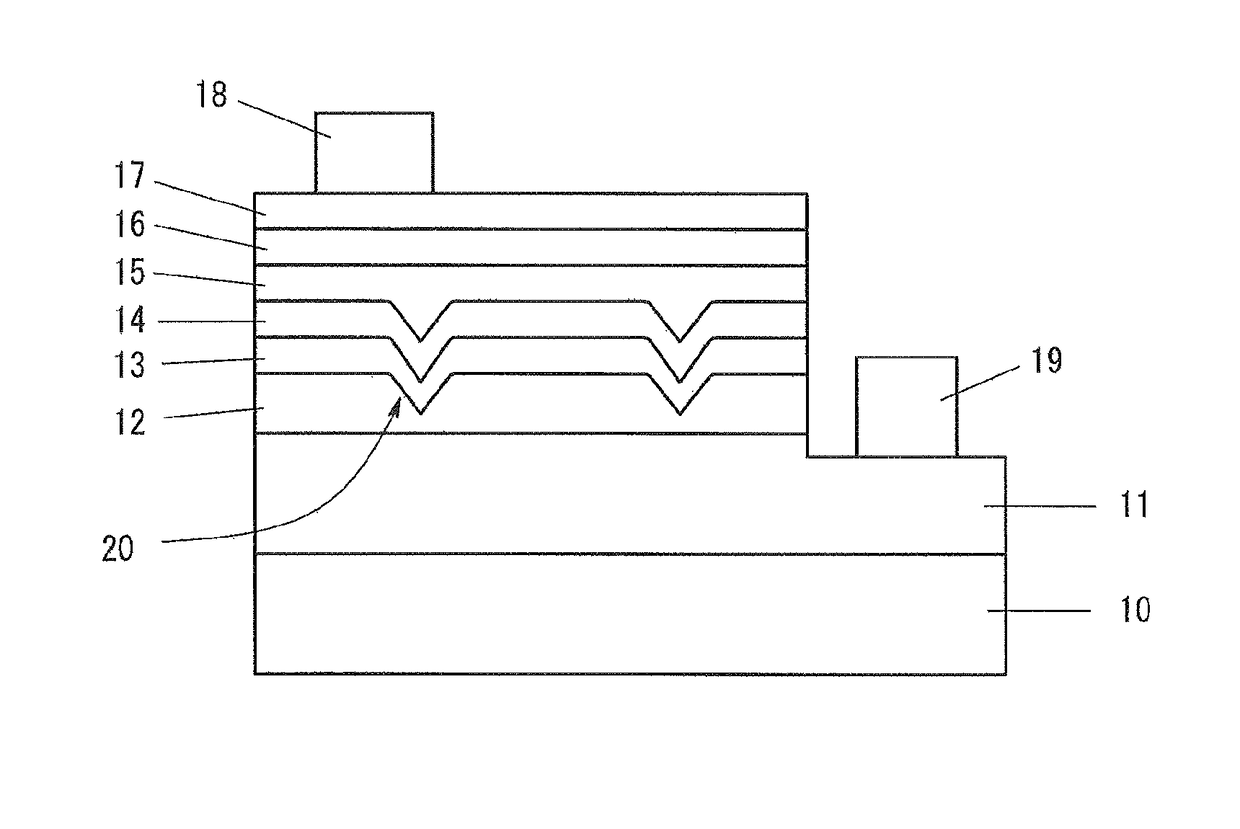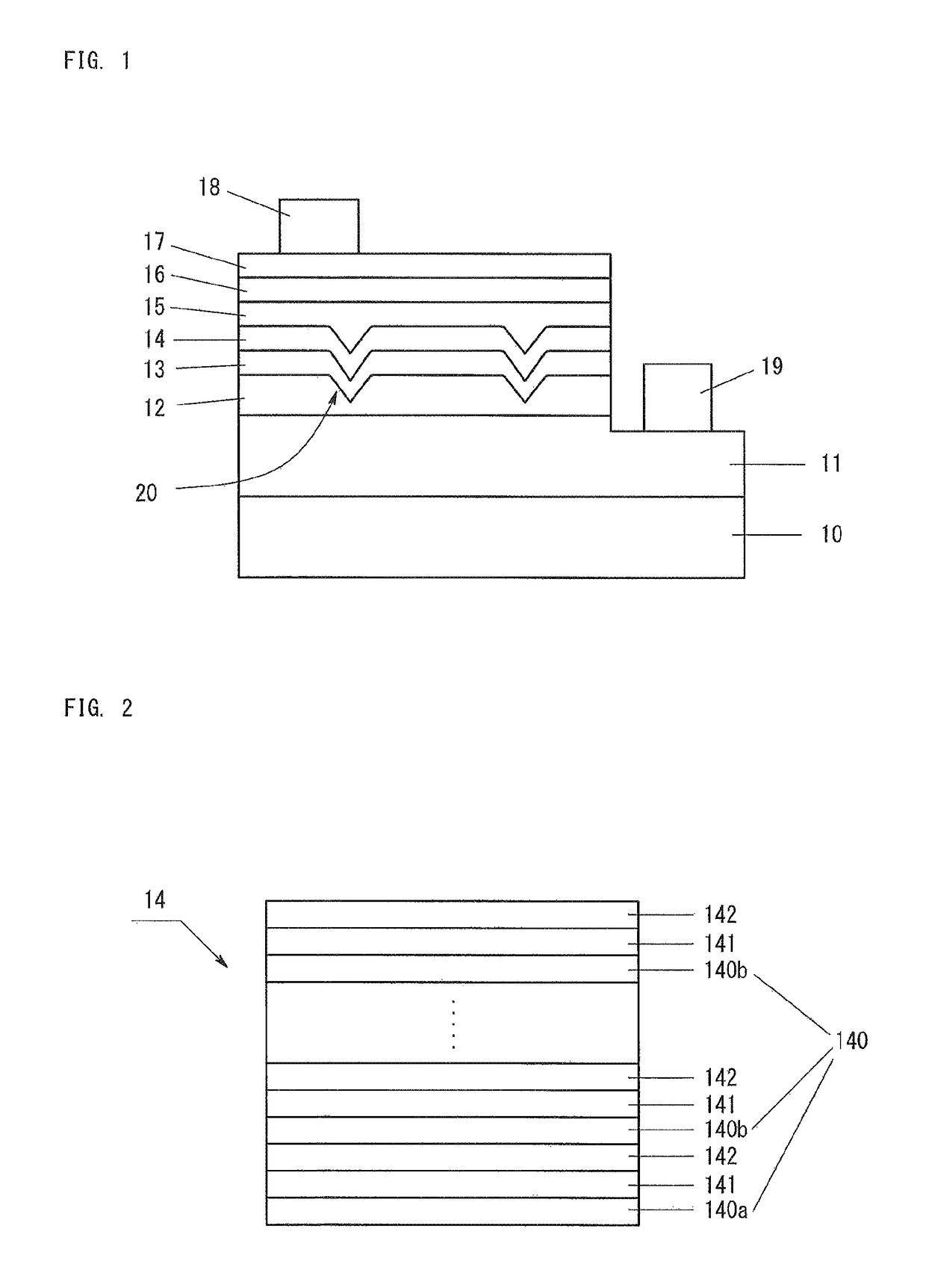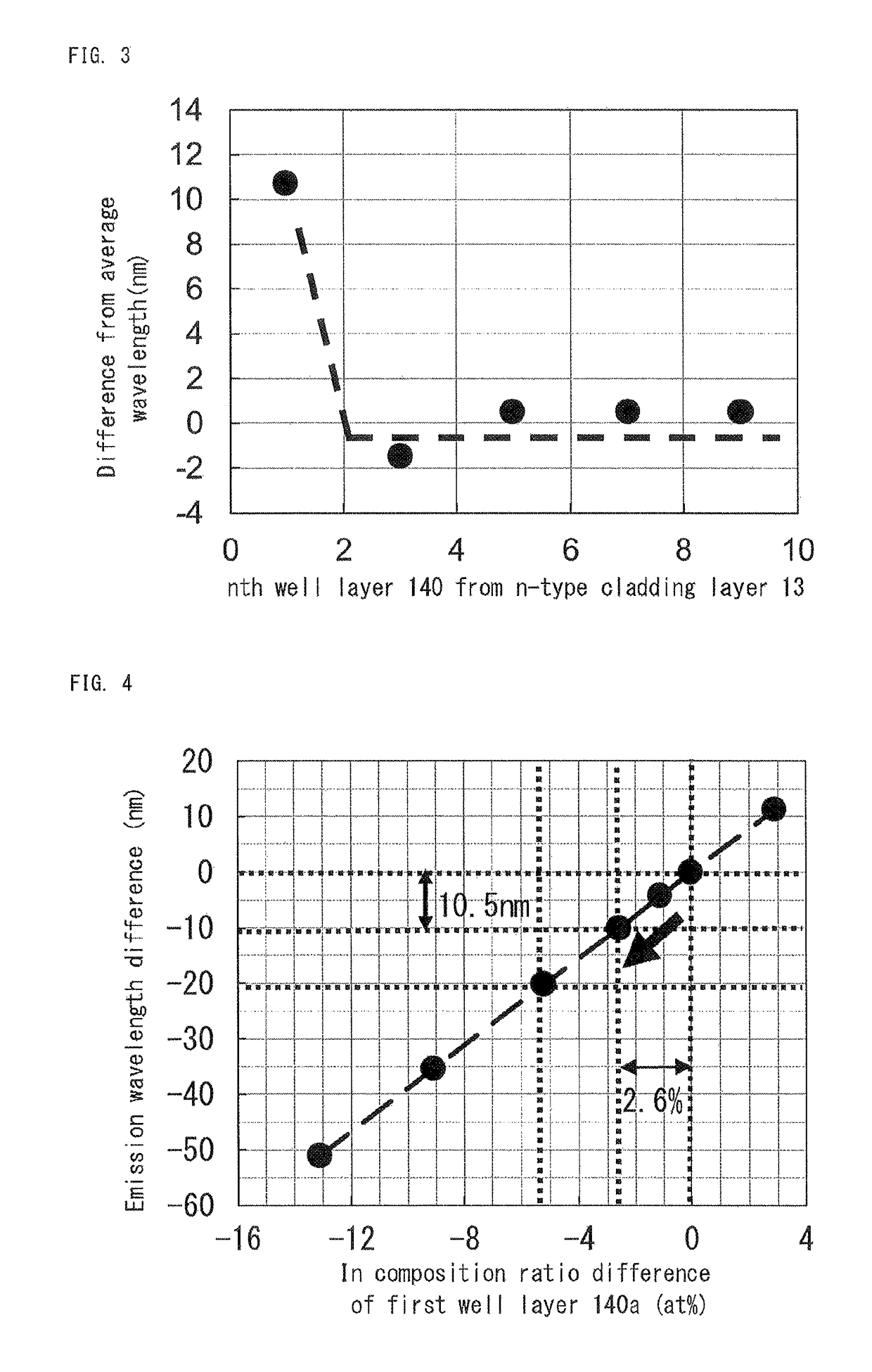Light-emitting device and production method therefor
a light-emitting device and semiconductor technology, applied in the direction of semiconductor devices, basic electric elements, electrical equipment, etc., can solve the problems of further strain relaxation and insufficient elimination of strain, and achieve the effect of reducing the full width at half maximum of the emission spectrum, improving emission efficiency, and improving efficiency
- Summary
- Abstract
- Description
- Claims
- Application Information
AI Technical Summary
Benefits of technology
Problems solved by technology
Method used
Image
Examples
embodiment 1
Structure of Light-Emitting Device
[0024]FIG. 1 is a sketch showing the structure of a Group III nitride semiconductor light-emitting device according to Embodiment 1. As shown in FIG. 1, the light-emitting device according to Embodiment 1 has a substrate 10. On the substrate 10, an n-type contact layer 11, an nESD layer 12, an n-type cladding layer 13, a light-emitting layer 14, a p-type cladding layer 15, and a p-type contact layer 16, each of them being made of Group III nitride semiconductor, are deposited via an AlN buffer layer (not illustrated). On the p-type contact layer 16, a transparent electrode 17 is provided, and on the transparent electrode 17, a p-electrode 18 is provided. A trench is formed on a part of a surface of the p-type contact layer 16, and the n-type contact layer 11 is exposed at the bottom surface of the trench. An n-electrode 19 is provided on the exposed n-type contact layer 11.
[0025]Next will be described the components of the light-emitting device acco...
PUM
 Login to View More
Login to View More Abstract
Description
Claims
Application Information
 Login to View More
Login to View More - R&D
- Intellectual Property
- Life Sciences
- Materials
- Tech Scout
- Unparalleled Data Quality
- Higher Quality Content
- 60% Fewer Hallucinations
Browse by: Latest US Patents, China's latest patents, Technical Efficacy Thesaurus, Application Domain, Technology Topic, Popular Technical Reports.
© 2025 PatSnap. All rights reserved.Legal|Privacy policy|Modern Slavery Act Transparency Statement|Sitemap|About US| Contact US: help@patsnap.com



